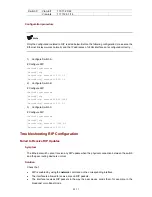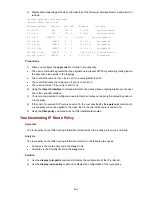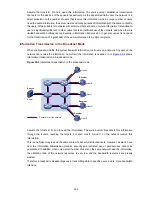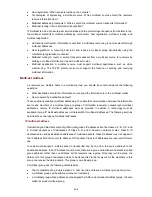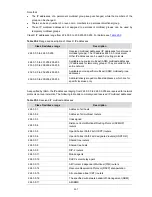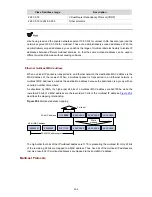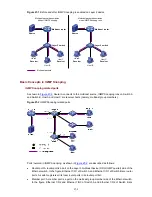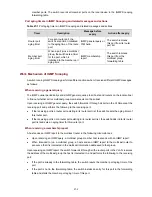
z
All receivers interested in the same information form a multicast group. Multicast groups are not
subject to geographic restrictions.
r 3 multicast device. In
nage multicast group
bers.
F
a better
t, yo
programs, a
z
A router that supports Layer 3 multicast is called multicast router or Laye
addition to providing multicast routing, a multicast router can also ma
mem
or
understanding of the multicast concep
s shown in
u can use the analogy of a transmission of TV
Table 25-1
.
Table 25-1
An analogy between TV transmission and multicast transmission
Step
TV transmission
Multicast transmission
1
A TV station transmits a TV program
sends multicast data to a
through a television channel.
A multicast source
multicast group.
2
A user tunes the TV set to the channel.
A receiver joins the multicast group.
The user starts to watch the TV program
transmitted by the TV station via the
channel.
The receiver starts to receive the multicast
data that the source sends to the multicast
group.
3
4
The user turns off the TV set.
The receiver leaves the multicast group.
A multicast source does not necessarily belong to a multicast group. Namely, a multicast source is
receiver.
data to multiple multicast groups at the same time, and multiple
e multicast group at the same time.
z
not necessarily a multicast data
z
A multicast source can send
multicast sources can send data to the sam
Common Notations in Multicast
Two
z
rendezvous point tree (RPT), or a multicast packet that any multicast source
s any multicast source, while “G” represents a
rtest path tree (SPT), or a multicast packet that multicast source S sends to
multicast group G. Here “S” represents a specific multicast source, while “G” represents a specific
Adva
Advantag
clude:
oint application possible.
notations are commonly used in multicast:
(*, G): Indicates a
sends to multicast group G. Here “*” represent
specific multicast group.
z
(S, G): Indicates a sho
multicast group.
ntages and Applications of Multicast
es of multicast
Advantages of multicast in
z
Enhanced efficiency: Multicast decreases network traffic and reduces server load and CPU load.
z
Optimal performance: Multicast reduces redundant traffic.
z
Distributive application: Multicast makes multiple-p
25-4


